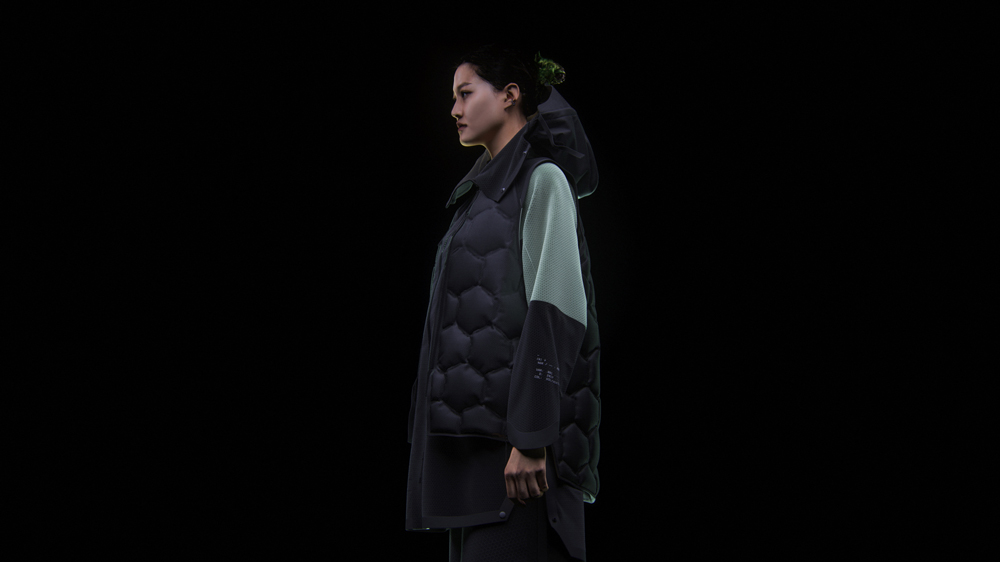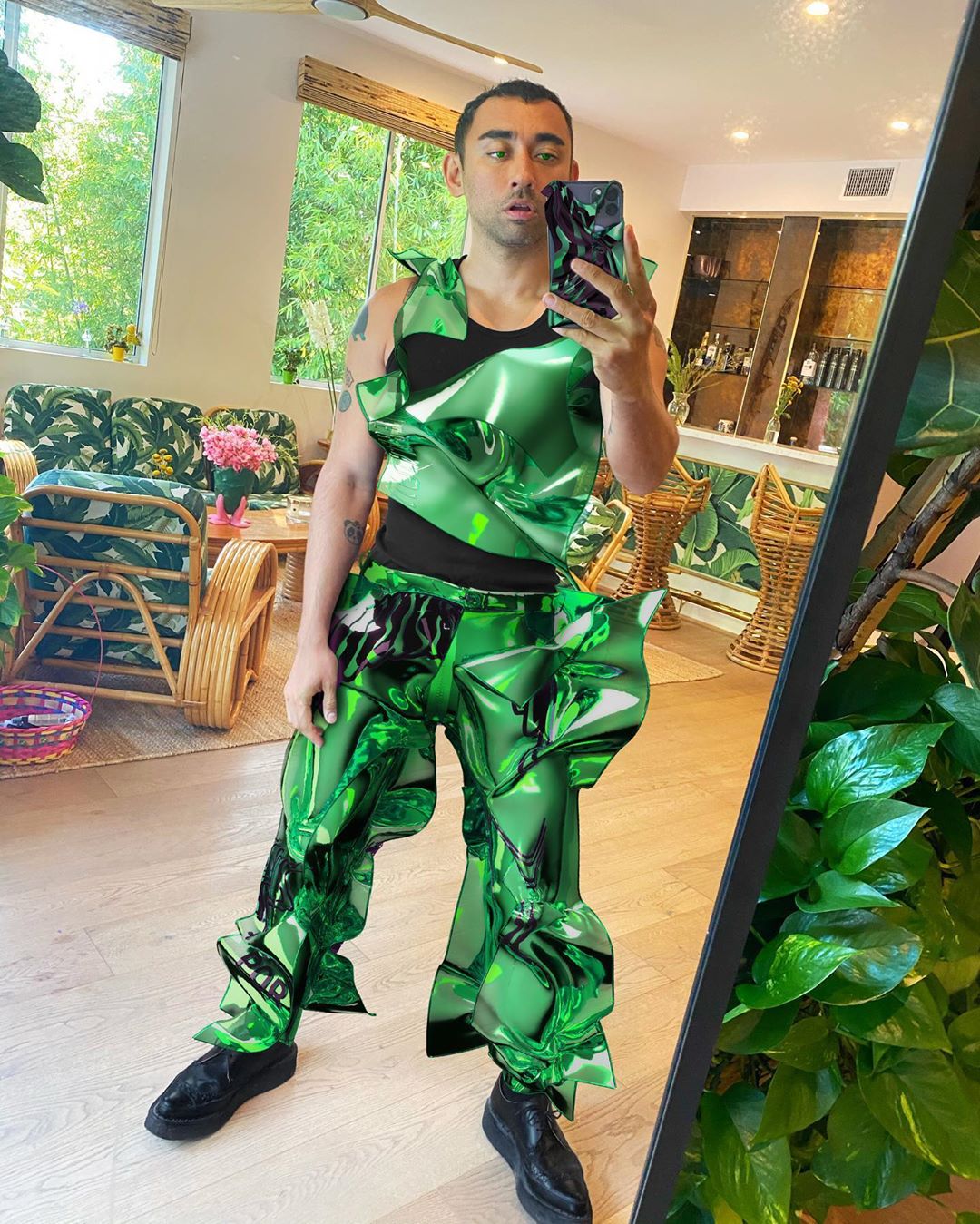“The world as we knew it is over,” says Donatella Versace and she is right. Fashion has always been a community driven by passion, artistry and invention . . . until it all stopped with the spread of the global pandemic. As for the future? In a script that is now being rewritten each day, there are a few constants: an increasing focus on sustainable fashion where we can give in to our hard-wired urge to consume — without stripping the earth of its resources. Parallel to this, the increasing growth of digitalization.
Propelled by the pandemic, the fashion industry found itself caged in lockdowns and social distancing, with niche virtual runway shows becoming an integral part of the mainstream. Considering fashion’s high level of creativity and fluidity, our generation embraced digital fashion and avatars. Increasingly, we will see digital collections free from physical restrictions become part of the fashion landscape. Perhaps, to counter the ‘wear once, take a selfie, throw it away’ philosophy of the young.”We’ve opened up a world of taking chances with styling, without leaving a negative footprint on the world,” Morten Grubak of Virtue Nordic, told iD.
Digitalization is a logical step forward. A study by Institute of Digital Fashion reveals that 92 per cent of respondents report are leaning towards customised avatars. This has motivated fashion brands to partner with metaverse platforms so they can provide digital apparel and create their own virtual spaces and customisable avatars. Tapping into what people want — and offering options that are not currently available — offers a chance to become more relevant to online consumers. This is especially true when appealing to Gen Z.
“Gen Z is ushering in an identity revolution. Every individual person has the right to create their own identity that is distinct and separate from the conditions of their birth,” says AnneMarie Hayek, founder and president of Global Mosaic, tells Vogue Business.
According to Ellen MacArthur Foundation, $500 billion is lost every year in clothing under-use and waste; 87 per cent of fashion goes to landfill. So what would happen if we only made clothes people really wanted? This is the concept behind New York-based Neuro Studio’s Solventus 2019, a line entirely conceptualised as digital 3D models which enable us to see the fine details of the garment while allowing the studio to follow a high sustainability business model wherein the garment is made only after the consumer orders it. The collection is not only made from recycled fabrics but also eradicates the process of overproduction and inventory.

Neuro Studio’s Solventus 2019
Fashion brand Tribute creates digital clothing that it places on people who spend close to $700 for digital-only apparel. Prior to starting it, founders Gala Marija Vrbanic and Filip Vajda worked on a traditional clothing brand, but love of sustainable design led them to take the concept to the extreme with Tribute. In other words, sustainable and Instagram bait! “We truly believe this is something that is going to shape the future of fashion, and it’s something that is totally zero-waste. If you recycle many plastic bottles or produce many organic cotton, it’s still going to be a problem—even a greater one, because when you produce organic cotton, there’s a lot of more water used,” Vrbanic tells Vogue. “In this case, there are no external resources used. In a couple of years, everything is going to be digital.” There are many such brands appealing to the digitally-savvy consumer. Carlings has been crafting digital streetwear since 2018. And, The Fabricant has a digital denim line.

Tribute
As future technology evolves, parallel movements are showing a return to the hand made. While each designer is unique, the broad consensus seems to be that the the manner in which garments are made need to be continually reassessed and redesigned. “I hope that the system, which has to change as a result of all of this, will allow us to define what we do in a new way, in a different way,” Marc Jacobs tells Vogue Business, “to express it in another way. To show it, to make it, to produce it, to distribute it, to communicate it: All of that will have to change.” Stella McCartney, long a champion of sustainability in fashion, echoes those thoughts. Her sustainable viscose ensures that no deforestation occurs. As part of autumn 2020, she began using Koba, made from plant pulp and recycled polyester that uses around thirty per cent less energy and sixty three per cent less carbon emissions. This is just one of the things she has done to define the modernity of the fashion brand.
“I look at social behaviours,” fashion forecaster Geraldine Wharry tells BBC. “And I think supply scarcity – in terms of water and fabric shortages and costs going up, for example – is going to be a big one. When those things happen, people shift their budgets for what they really need to survive. Brands without some kind of sustainability strategy are in trouble. There’s a lot of interest in craft.”
Before our lives propel forward full-throttle again, fashion designers and tech innovators are working towards designing a better future. While the precise path ahead might still be unclear, its direction is not. The world’s last great pandemic, which lasted from 1918 to 1919, ushered in one of the most progressive and creative decades of the twentieth century. This time around, the future of fashion is pointing towards an ethical, sustainable future with most of the answers increasingly pointing towards digitalisation.
Jasmeen Dugal is Associate Editor at FashionABC, contributing her insights on fashion, technology, and sustainability. She brings with herself more than two decades of editorial experience, working for national newspapers and luxury magazines in India.
Jasmeen Dugal has worked with exchange4media as a senior writer contributing articles on the country’s advertising and marketing movements, and then with Condenast India as Net Editor where she helmed Vogue India’s official website in terms of design, layout and daily content. Besides this, she is also an entrepreneur running her own luxury portal, Explosivefashion, which highlights the latest in luxury fashion and hospitality.








